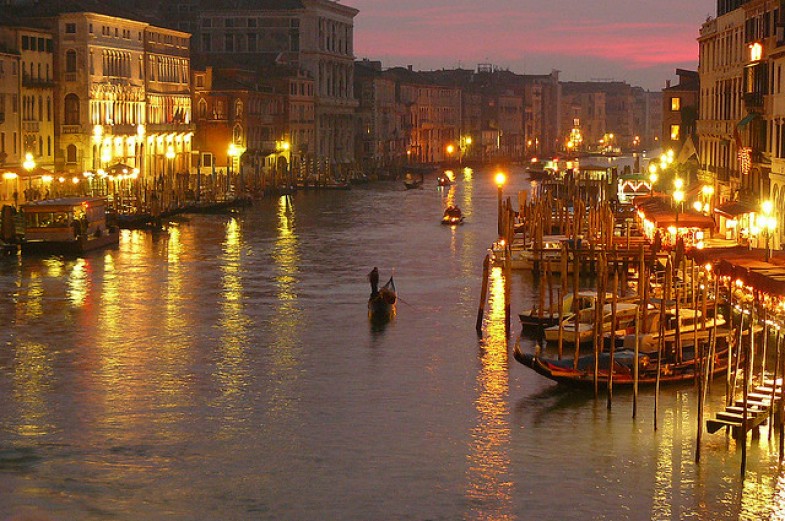Everywhere you turn, people are talking about--- and attempting cross off items from---bucket lists. Only a few people are talking about “generativity”--a term introduced by psychologist Erik Erikson, who described it as an active concern for the next generation and a need to leave something of value for people who will live on after we die. But I feel there is a strong connection between the two.
Bucket lists, of course, refer to what we want to experience before we kick the bucket. This term first entered the mainstream in the 2007 movie “The Bucket List” movie-- which depicted things like getting a tattoo, skydiving, seeing the Pyramids in Egypt, driving a Mustang car, and visiting Italy. If you go the bucketlist.org website, you’ll see that typical bucket list items focus on adventure, challenge, and fun.
The idea of generativity suggests that it might be a good idea to have a bucket list for future generations – not just for ourselves. These too can offer adventure, challenges and fun by making a long-lasting contribution that helps people and the planet. We can look to generative heroes like Wangari Maathai, tree planter and founder of the Green Belt Movement in Africa as well as lesser-known people making valuable contributions such as the Seed Savers, who work to conserve endangered garden and food crops and a number of organizations dedicated to protecting biodiversity or working to end world hunger.
Other essential commons that future generations will depend upon would include access to clean air and water, healthy soil to grow nutritious food for all people on the planet, natural areas where we can walk and observe wildlife, and the sound of song birds greeting each new day.
The concept behind a bucket list is to identify what you want and then figure out a way to get it. Thus, a commons bucket list for future generations requires a commitment and investment of resources to turn the “wishes” into reality.
While Erikson describes generativity in terms of a challenge, he also refers to it as a calling or inner urge to satisfy a need within us. The eminent biologist E.O. Wilson may not use the term generativity, but he does suggest that a part of what makes us human is the need to keep our species going, to keep ourselves from becoming extinct. This need, he says, is built into our genes. But genes alone don’t determine our actions. What we do as humans, Wilson says, is determined in large part by the co-evolution of our genes and the culture in which we live. . A recent study shows that adults who score high on a generativity scale are more likely to believe in and engage in environmentally responsible behavior than adults who are not high in generativity.
Some cultures are clearly more generative in their thinking and behaviors. A “Seven Generations” perspective, as practiced by many indigenous cultures, is one example of a cultural principle supporting generativity. This way of thinking calls for a consideration of how all decisions made today will impact children seven generations into the future. While this principle may have originated with the Iroquois Nation of North America, it is now taking root in the hearts and minds of people from diverse backgrounds working in a variety of disciplines.
Generativity as a calling can be a gift as much for the generative person as for future generations. In this sense, generativity isn’t a job; it’s a joy. We know from “happiness research” that giving is a form of receiving and that good deeds contribute to one’s own happiness. In a recent interview, 86-year-old E.O. Wilson said that he would die a happy man if he knew his life and work contributed in some positive way to a better future for people and the planet. He is now calling on the rest of us to take bold steps to rescue the planet’s biodiversity.
At a recent national parks summit, Wilson suggested setting aside half the planet for all the other life forms with which we humans share the earth. This is the subject of Wilson’s 31st book (tentatively titled Half Earth: The Struggle to Save the Rest of Life) scheduled to be published in 2016.
But what if we don’t live up to the challenge of generativity – then what? According to Erikson, “stagnation” then occurs, which he describes as a failure to develop, progress, or advance. With stagnation, comes the loss of potential for growth, which can apply to an individual as well as to all of human society. As humans, we have decision-making powers. We don’t act by instinct alone. Wilson says that “we can do with Earth what we please . . . . We have enough intelligence, goodwill, generosity, and enterprise to turn Earth into a paradise both for ourselves and for the biosphere that gave us birth.” But if we allow stagnation to set in, we could have a planet in the future which is inhabitable for humans.
Consider poet Mary Oliver’s challenging question: “What is it you plan to do with your one wild and precious life?” We can chase after bucket list items to enhance our individual lives or we can make a bucket list for future generations and work to give them a better life. But if we use our time and resources wisely, we can perhaps do both.

